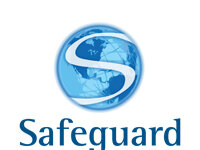
There’s no reason for the Lorax to be scolding the mortgage servicing industry.
Yet so many mortgage servicing companies continue to give the Lorax – the famous Dr. Seuss character who “speaks for the trees” – a reason to scold, as they continue to stay “stuck” in paper-based processes that harm the environment.
While it’s true that mortgage servicers are increasingly gravitating to software solutions that completely digitize the mortgage servicing process, they are doing so mainly to gain efficiencies and cut operating costs, as well as to improve borrower satisfaction.
Although these are awesome reasons, many servicers continue to overlook the environmental benefits of going paperless – which can be just as important to younger borrowers, in terms of corporate image, as it is to provide superior customer service.
To learn more about the many benefits of going paperless for mortgage servicers, MortgageOrb recently interviewed Susan Graham, president and chief operating officer for mortgage software firm FICS.
Q: Why is paperless servicing important?
Graham: Going paperless – replacing the use of physical papers with digital documents – is one important way to “go green.” According to the Environmental Protection Agency, the average office worker uses 10,000 sheets of paper – the equivalent of 1.2 trees – per year. Paper use may be even higher in the mortgage industry.
The environmental impact of going paperless goes beyond saving trees. The U.S. pulp and paper industry is among the top industrial energy consumers. Worldwide, the pulp and paper industry is the fifth largest consumer of energy, accounting for 4% of all the world’s energy use.
Assuming that a 50-employee bank uses 500,000 sheets of paper annually, the environmental impact is significant: 76.5 million BTUs of energy are used over the life cycle of the paper (the equivalent of 91 residential refrigerators operated/year), producing 53,900 pounds of carbon dioxide (equivalent to 4.9 cars/year).
By reducing paper, we decrease our energy consumption, thereby reducing our carbon footprint.
Paperless servicing is also important to attract younger, environmentally conscious borrowers – especially Millennials and Gen Z – who are particularly concerned about the environment. According to a survey of 1,000 Millennials, 70% consider a company’s environmental practices when deciding whether to purchase its products. According to one report, Gen Z individuals consider the environment the second most important issue today.
Q: How does paperless servicing save money?
Graham: In addition to the savings associated with reduced use of paper, ink and toner cartridges, a paperless business also spends less money on postage and filing cabinets.
Employees will spend less time printing and mailing paper statements, filing documents and searching for misplaced documents.
According to PricewaterhouseCoopers, it costs $20 in labor alone to file a document, $120 to locate a misfiled document, and $220 to recreate the document if it can’t be located.
Q: In addition to saving money, how else does paperless servicing benefit mortgage servicers?
Graham: By providing convenient, online payment options, servicers can encourage borrowers to make their mortgage payments on time – or even early. Borrower-facing Web applications that provide immediate access to mortgage information and statements reduce phone calls from borrowers, saving staff time. Electronic documents facilitate compliance with regulatory and reporting requirements. The digital storage capability allows for optimum control of the documents for record retention and easier access for audits, research or responding to borrower inquiries.
Because access to digital files can be controlled via passwords or login to software storing the files, electronic documents are more secure than paper documents left out on a desk or stored in an unsecured location.
Q: How does paperless servicing benefit borrowers?
Graham: Borrowers appreciate having quick, convenient, round-the-clock access to their mortgage information. Environmentally conscious Millennials and Gen Z-ers want to be able to opt out of paper statements and receive documents electronically. Paperless statements and other mortgage-related documentation allow borrowers to include their mortgage documents with their other digitally stored financial information.
Q: How can mortgage servicing software create a paperless experience?
Graham: Mortgage servicing software, like FICS’ Mortgage Servicer and Commercial Servicer, that includes a digital imaging system makes it easy to automatically generate electronic versions of all documents and reports and display them electronically, eliminating the need for paper statements.
Statements created in Mortgage Servicer or Commercial Servicer can be stored electronically and then viewed via borrower-facing Web applications. As statements are generated, borrowers are notified via email that their statements are available to be viewed. This can be helpful in reducing phone calls by borrowers eager to obtain their 1098 information.
Borrowers can also change address and contact information without filling out a paper change notification form.
Radstar – FICS’ integrated digital imaging and storage system – electronically archives all reports and documents generated by Mortgage Servicer or Commercial Servicer. External documents (appraisals, insurance policies, tax bills and closing documents) can also be electronically stored. Borrowers can easily retrieve the electronically archived documents and statements online via eStatus Connect or LoanStat (FICS’ Web applications for Mortgage Servicer and Commercial Servicer, respectively). Borrowers can opt out of paper statements, electing to view only digital documents instead.
Q: What role do Web applications play?
Graham: Web applications are the preferred method of communication between borrowers and servicers, providing convenient, paperless access to loan information.
FICS’ online solution – eStatus Connect – gives borrowers 24/7 online and mobile access to their payment history, loan information, statements and notices. Borrowers can also make one-time or recurring payments.
Servicers can send automated email messages to borrowers from within Mortgage Servicer, encouraging them to view statements and notices – such as loan statements, ARM analysis, escrow analysis – in eStatus Connect.
Servicers can also send personalized messages to borrowers to read once they log in to the Web application.
Importantly, eStatus Connect provides the mechanism for borrowers to opt-out of receiving paper statements. Being proactive and educating borrowers about the benefits of online access to loan information and electronic statements saves servicers money by 1) saving staff time by reducing customer service phone calls and 2) saving money on paper and postage.
LoanStat – the online solution for Commercial Servicer customers – allows borrowers to view their commercial loan information (including loan statements and payment history) online via the financial institution’s website.
Borrowers can make one-time or recurring payments. In addition to viewing loan information, borrowers can update their personal contact information and request items such as amortization schedules, coupons, activity reports, payoff quotes and statements.
Servicers can send an automated email message to borrowers, encouraging them to view statements and notices, such as loan billing statements, escrow analysis or ARM change notices, on their LoanStat website.
Servicers can also send borrowers a personalized email from within Commercial Servicer.












